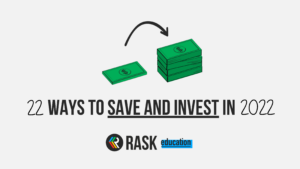This explainer discusses what Initial Public Offerings (IPOs) are, how they work and the opportunities and risks involved.
Investing in something new is exciting, and with the chance of riches on the other side of the rainbow, the listing of a new company on the Australian Securities Exchange (ASX) can make regular investors and professional fund managers alike very excited. So what exactly does it mean for a company to “go public”?
IPOs are a lucrative business in Australia. First, you’ve got the law firms drafting the documents, the brokers putting together the deal and selling it to wholesale and retail investors, the ASX taking their listing fee, accounting firms auditing annual reports and any marketing costs involved.
What is an IPO?
When a private company wants to offer shares to the public as part of a new stock issuance and list on the ASX, it’s called an initial public offering (IPO). Companies must meet the rules and requirements set out by the ASX and ASIC prior to listing on the ASX, and fulfil minimum capital raising and disclosure requirements.
When a company goes public, it also gives private investors (founders/family/venture capitalists/angel investors) a chance to realise their investment and take some profits off the table. Going public also allows a wider audience to invest in their company moving forwards.
According to Investopedia, “when a company goes public, the previously owned private share ownership converts to public ownership, and the existing private shareholders’ shares become worth the public trading price”.
How do you find out about IPOs in Australia?
Investors often wonder how you can actually find out about these secret Australian IPOs floating around. For large IPOs, there is often copious media coverage leading up to the event. Think recently of Snowflake, Airbnb and BeyondMeat in the US and Booktopia (ASX: BKG), Adore Beauty (ASX: ABY) and Sezzle (ASX: SZL) in Australia. You can also find out about upcoming IPOs via your broker, or sites like SmallCaps, Fresh Equities, Equitise and OnMarket.
In a research report published by our regulator ASIC a few years back, they observed that some “small to medium-sized firms have started to use more innovative techniques to market IPOs, including social media (e.g. Twitter, Facebook, LinkedIn, WeChat and YouTube), OnMarket BookBuilds, crowd-sourced funding sites, and other connecting platforms which link issuers directly with investors.”
How do you invest in IPOs in Australia?
IPOs can often be difficult for regular investors to get their hands on in Australia, as the more popular IPOs are often sold predominately to wholesale and institutional investors. Typically, a broker (or a number of brokers for large IPOs) will be given a certain allocation of shares to allocate to investors.
If you have access to a full-service broker you might be able to access IPOs through them, if they have an available allocation. So, if you have an eye on a particular IPO, have a look through the prospectus to determine who the lead brokers are.
There are some new companies that have launched in the last few years that give investors access to smaller IPOs through their platform, without having to be tied to one broker. These include the likes of Fresh Equities, Equitise and OnMarket.
Opportunities and challenges for companies listing on the ASX
According to legal firm Maddocks, some key opportunities and challenges for companies listing on the ASX include:
Opportunities
- Raising capital
- Creating a market for the company’s shares
- Raising the profile of the company
- Providing an exit-strategy for early investors
- Attracting & retaining employees
- Attracting institutional investment
- Greater efficiencies & transparency
Challenges
- Loss of control
- Cultural change & privacy
- Diversion of management focus
- Increased disclosure & corporate governance
- Current & future market conditions
- Costs
These are worth noting as an investor, as some of these factors will have an impact on companies that list on the ASX initially and into the future. For a company to maintain its listing on the ASX, it involves “ongoing costs such as audit costs, share registry fees, annual ASX listing fees, and annual general meeting costs” (Maddocks).
If you’re interested in learning more about IPOs, explore the resources included below and take our free beginner shares course.
Resources
- When and Why Do Companies ‘Go Public’?
- ASIC reviews marketing practices in IPOs
- A guide to IPO listing in Australia | DLA Piper Insights
- BDO ASX listing guide: IPO handbook 2020
- Maddocks: A Guide to Listing & the IPO Process in Australia
- ABC: Want to make some money in 2021? IPOs are luring investors, but the risks are huge
- Initial Public Offering (IPO) Definition



